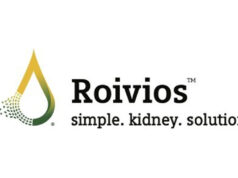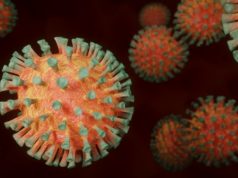 Drug-induced acute kidney injury (DI-AKI) is “challenging to distinguish” from other types of AKI even for “experienced nephrologists”, yet this adverse drug event (ADE) affects 14–26% of the hospitalised adult population in the USA. So say the authors of new research published in Kidney International Reports, among them first author Zaid K Yousif and corresponding author Linda Awdishu (both Skaggs School of Pharmacy and Pharmaceutical, La Jolla, USA), who endeavoured to identify key clinical characteristics of the condition with a view to easing its diagnosis.
Drug-induced acute kidney injury (DI-AKI) is “challenging to distinguish” from other types of AKI even for “experienced nephrologists”, yet this adverse drug event (ADE) affects 14–26% of the hospitalised adult population in the USA. So say the authors of new research published in Kidney International Reports, among them first author Zaid K Yousif and corresponding author Linda Awdishu (both Skaggs School of Pharmacy and Pharmaceutical, La Jolla, USA), who endeavoured to identify key clinical characteristics of the condition with a view to easing its diagnosis.
The challenge in diagnosing DI-AKI lies in “competing aetiologies, clinical heterogeneity among patients, and a lack of accurate diagnostic tools”, Yousif et al explain. Though the risk of AKI increases 53% for each exposure to nephrotoxic drugs, they argue, “gaps in the literature”, including variable definitions of the condition and a lack of diagnostic markers, make the process of identification difficult.
While causality assessment tools for ADEs generally have been shown to be effective, they have not been validated for DI-AKI in particular, the authors state. Currently, it demands “careful evaluation of competing clinical risk factors and concurrent nephrotoxin exposures by an experienced clinician”.
The study authors therefore set out two aims: first, to identify the injury, risk factors, and outcomes of DI-AKI. Second, they aimed to “identify the best predictive variables” that separate DI-AKI from other causes of AKI in hospitalised patients.
Their study was a retrospective analysis of data from the Drug-Induced Renal Injury Consortium (DIRECT) study, which took place from February 2013 to December 2015. DIRECT was an international, observational cohort study in which 42 centres participated, and in which DI-AKI cases were clinically adjudicated. A total of 314 AKI cases met the eligibility criteria after screening, with 271 (86%) judged to be DI-AKI. Most were recruited from the USA (68%).
The authors outline that the drugs most frequently associated with causing DI-AKI were vancomycin (48.7%), non-steroidal anti-inflammatory drugs (18.2%), and piperacillin/tazobactam (17.8%). The inter-rater reliability (IRR) for adjudication of DI-AKI was 0.309, with Yousif et al adding that a multivariable model identified age, vascular capacity, hyperglycaemia, serum creatinine trends, and other factors as “significant predictors” of the condition “with good performance”.
“Our analysis revealed that most clinical characteristics and risk factors are shared between the DI-AKI and not DI-AKI groups,” Yousif et al say, which they add attests to the difficulty of distinguishing drug-induced injury. “AKI ascertainment is consistently a debatable decision, even amongst experienced clinicians.”
In light of their findings, they call for the use of “standardised consensus definitions” of DI-AKI, as well as the recording of the relevant clinical variables for these definitions in a consistent method across centres. They also recommend “training clinical adjudicators to reduce variability in the adjudication process”.
Turning to their multivariable logistic regression model in their discussion, the authors described its “good performance”, with an area under the curve (ROC AUC) of 0.86 for the outcome of DI-AKI. This, they suggest, points to the possibility of a probabilistic model that could be used to identify when AKI is caused by nephrotoxic drugs. “Statistical modelling,” Yousif and colleagues conclude, “offers a promising comprehensive approach to identifying probably DI-AKI from other AKI subtypes.” They add that further research is needed for the validation of their model, as well as for the development of DI-AKI-specific causality assessment tools.












